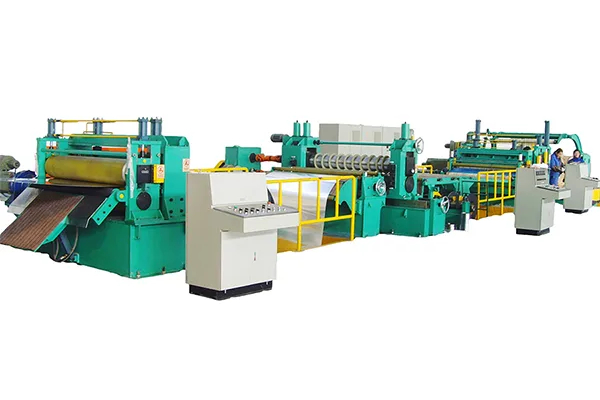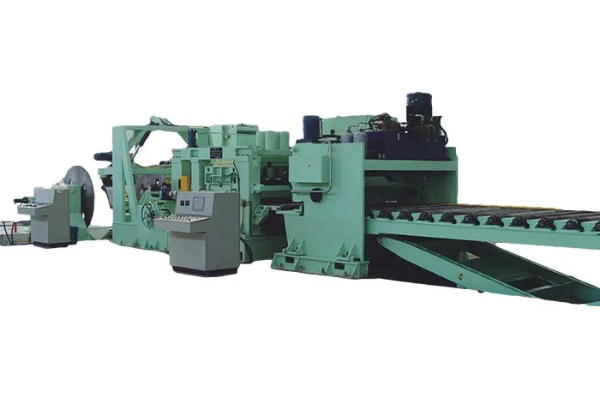
A Comprehensive Guide to Laser Sheet Cutting Machines and Their Features
- By:Metmac
- 2024-08-21
- 144
Unleash the Precision: Explore the Realm of Laser Sheet Cutting
In the modern manufacturing landscape, laser sheet cutting machines have emerged as indispensable tools, transforming the way industries shape and fabricate materials. These cutting-edge technologies offer unmatched precision and versatility, enabling the production of intricate and complex parts, prototypes, and finished products.
This comprehensive guide will delve into the world of laser sheet cutting machines, unravelling their features and capabilities. From understanding the various types of lasers to exploring advanced automation options, you will gain a deep understanding of these remarkable machines.
Types of Lasers
Laser sheet cutting machines utilize different types of lasers, each with unique characteristics:
CO2 Lasers: Known for their high cutting speeds and excellent edge quality in non-metallic materials, such as plastics and wood.
Fiber Lasers: Offer exceptional power density, providing rapid cutting speeds and efficiency in both metallic and non-metallic materials.
Green Lasers: Ideal for precision cutting of extremely thin materials, such as stainless steel foils and electronic components.
Key Features
Beyond laser type, laser sheet cutting machines boast a range of features that enhance their performance:
Automatic Nesting: Optimizes material usage by automatically arranging cutting paths within the sheet.
Closed-Loop Control: Monitors and adjusts laser parameters in real-time, ensuring consistent cut quality and precision.
Collision Avoidance: Protects the machine from damage by detecting potential collisions between the laser head and the material.
Remote Monitoring: Allows operators to monitor machine status and performance remotely, improving productivity and reducing downtime.
Advanced Automation
Laser sheet cutting machines seamlessly integrate with automation technologies, amplifying their efficiency and functionality:
Automated Material Handling: Automated systems load and unload materials, minimizing operator intervention and increasing throughput.
Vision Recognition: Advanced cameras detect features on the material, enabling precise cutting paths and quality control.
Robotic Integration: Robots integrated with laser cutters can perform secondary operations, such as part handling and sorting.
Applications
Laser sheet cutting machines have found widespread applications across industries, including:
Automotive: Precision cutting of components in automotive manufacturing.
Aerospace: Fabrication of lightweight and complex aerospace parts.
Electronics: Manufacturing of printed circuit boards (PCBs) and electronic components.
Medical: Precise cutting of medical devices and instruments.
Conclusion
Laser sheet cutting machines have revolutionized the manufacturing industry, enabling the production of high-quality, precision parts. Understanding the types of lasers, key features, and advanced automation options is crucial for maximizing the potential of these remarkable machines. By embracing the latest technologies, manufacturers can enhance productivity, reduce costs, and open new possibilities for innovation.
-
Mastering Form and Force: A Guide to Modern Metal Plate Bending Machines
2025/12/16 -
Demystifying Sheet Metal Laser Cutting Machine Price: The METMAC Value Perspective
2025/12/16 -
Metal Sheet Machinery: The Engine of Modern Fabrication and the METMAC Advantage
2025/12/16 -
Beyond the Bend: The Power and Precision of the Modern Sheet Profile Machine
2025/12/16
-
Advanced Sheet Metal Rolling, Laser Cutting, and Folding Machines for Precision Fabrication
2025/10/31 -
High-Performance Sheet Metal Bending and Cutting Machines for Modern Fabrication
2025/10/31 -
High-Quality Sheet Metal Equipment for Sale: Efficient Solutions for Modern Manufacturing
2025/10/31 -
High-Performance Sheet Metal Equipment for Sale: Forming and Shearing Solutions for Modern Fabrication
2025/10/22
-
A Guide to the Latest Innovations in Sheet Metal Folding Machines
2024/11/29 -
Key Features to Consider When Investing in a Sheet Metal Folding Machine
2024/11/28 -
Enhancing Precision with Advanced Sheet Metal Folding Machines
2024/11/27 -
How to Choose the Right Sheet Metal Folding Machine for Your Workshop
2024/11/26







